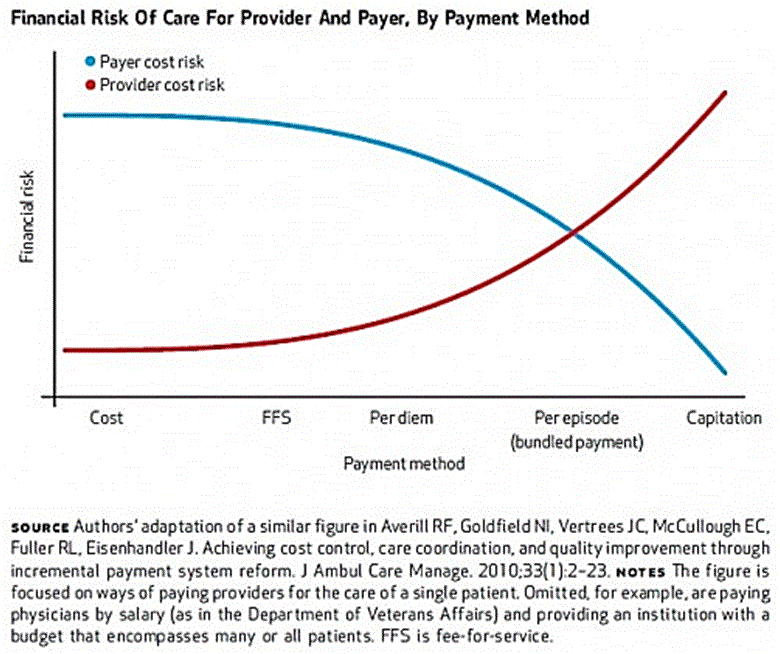You live with it every day, even though you don’t think of it that way. Most of the decision-making in the business world is based on it. It has been in healthcare for a long time. And soon, we will need to take it on in our clinical practice: financial risk. Payment reform methodologies seek to transfer financial risk to providers, particularly hospitals. Look at the slide below and remember where we said payment was going in the near future. A population health model (capitation in the slide) assembles a list of patients in a hospital system (Medicare patients in the case of the federal government) and payment to the hospital = ($Y x # of patients on list) per month, for all the care needed. If the hospital takes care of too many patients with high costs of care, they may end up with negative net income. Without understanding the costs of healthcare for certain patient populations, assuming this risk is dangerous. Furthermore, the allocation of funds between different clinicians, institutions, and allied health professionals is no longer the responsibility of the payer, but rather of the main institution taking care of the particular patient. Clinician payment will likely be tied to the outcome, which will be measured. This is the extreme, and models exist with lesser degrees of risk and different payment methodologies, but we are not sure yet where this will all end up.
We know that hospitals cannot manage patient risk without actively engaged clinicians on their team. And independent clinicians cannot manage financial risk without the hospital on their team. You can see where this is going: we need to work together to survive in this environment. We need best practices, preventative medicine to keep patients out of the hospital, cost analysis, financial planning, and the list goes on and on. Bundled payment methodology is just a simpler version with most of the same issues.
Can we pull it off successfully? Yes, we can, but not today. It will require planning, new strategies and collaboration. We will explore some of these elements in future bits. 
